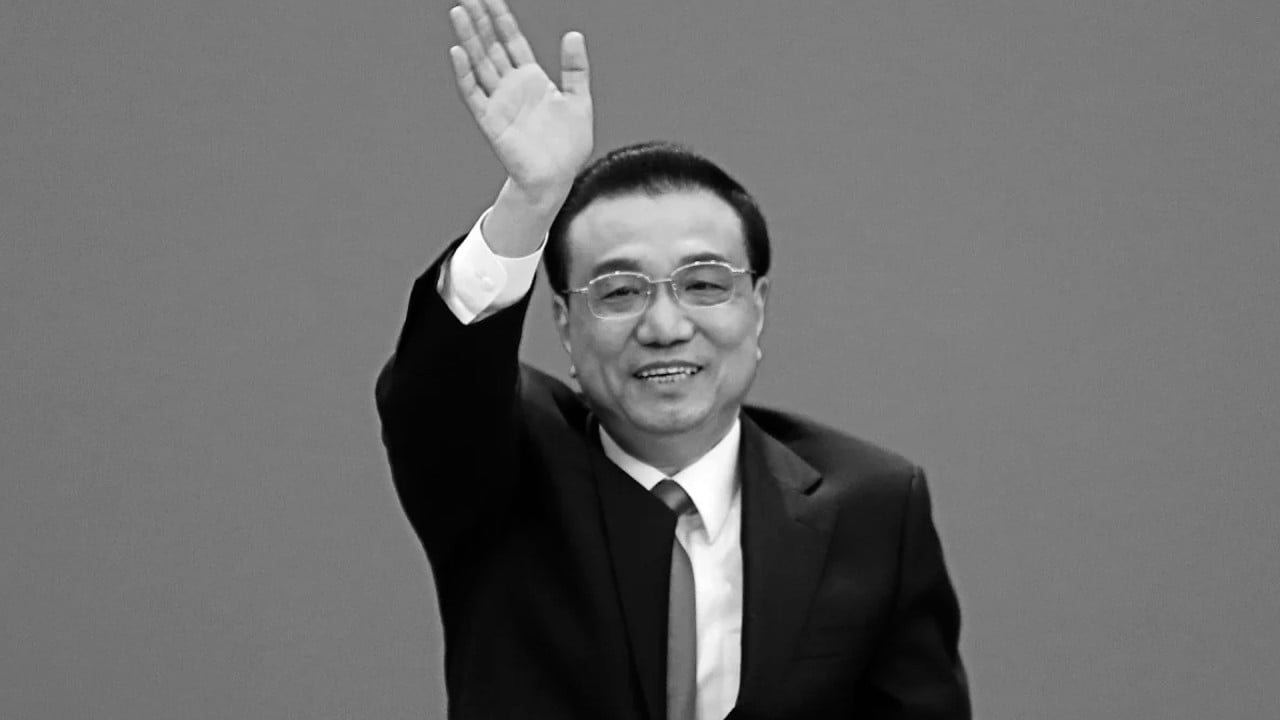The requirement for official flags to be flown at half mast applies to all government buildings, as well as to Chinese embassies overseas.
The protocol for Li’s mourning puts him on a par with previous premier Li Peng who died in 2019.
Li, who retired as China’s premier earlier this year, died of a heart attack at the age of 68 in Shanghai early on Friday morning. His body was flown to Beijing on the same day.
The sudden passing of the soft-spoken leader – known to many as “the people’s premier” – shocked the nation.
Thousands gathered in cities linked to Li’s life and career to pay tribute, laying masses of yellow and white flowers at landmarks associated with him. Millions also posted on China’s social media platforms.
Li was extolled by the ruling Communist Party as “an excellent CPC member, a time-tested and loyal communist soldier and an outstanding proletarian revolutionist, statesman and leader of the party and the state”.
It is exactly the same wording that was used on the death of Li Peng, China’s only previous premier of equal rank to have died in the past two decades.
This week’s funeral protocol will also follow the precedent set by Li Peng’s death, with all party and state leaders bidding farewell before the cremation, but without a top-level memorial meeting in Beijing.
Li Keqiang’s sudden death ‘a total surprise’ to China’s top leaders
Li Keqiang’s sudden death ‘a total surprise’ to China’s top leaders
President Xi Jinping delivered a eulogy at Jiang’s memorial meeting on December 6, 2022.
While China has adopted many soviet-style proceedings for its mourning protocols, the remains of leaders usually rest at home or a funeral parlour for seven days so that family and friends can pay tribute, in line with widely followed Chinese tradition.



